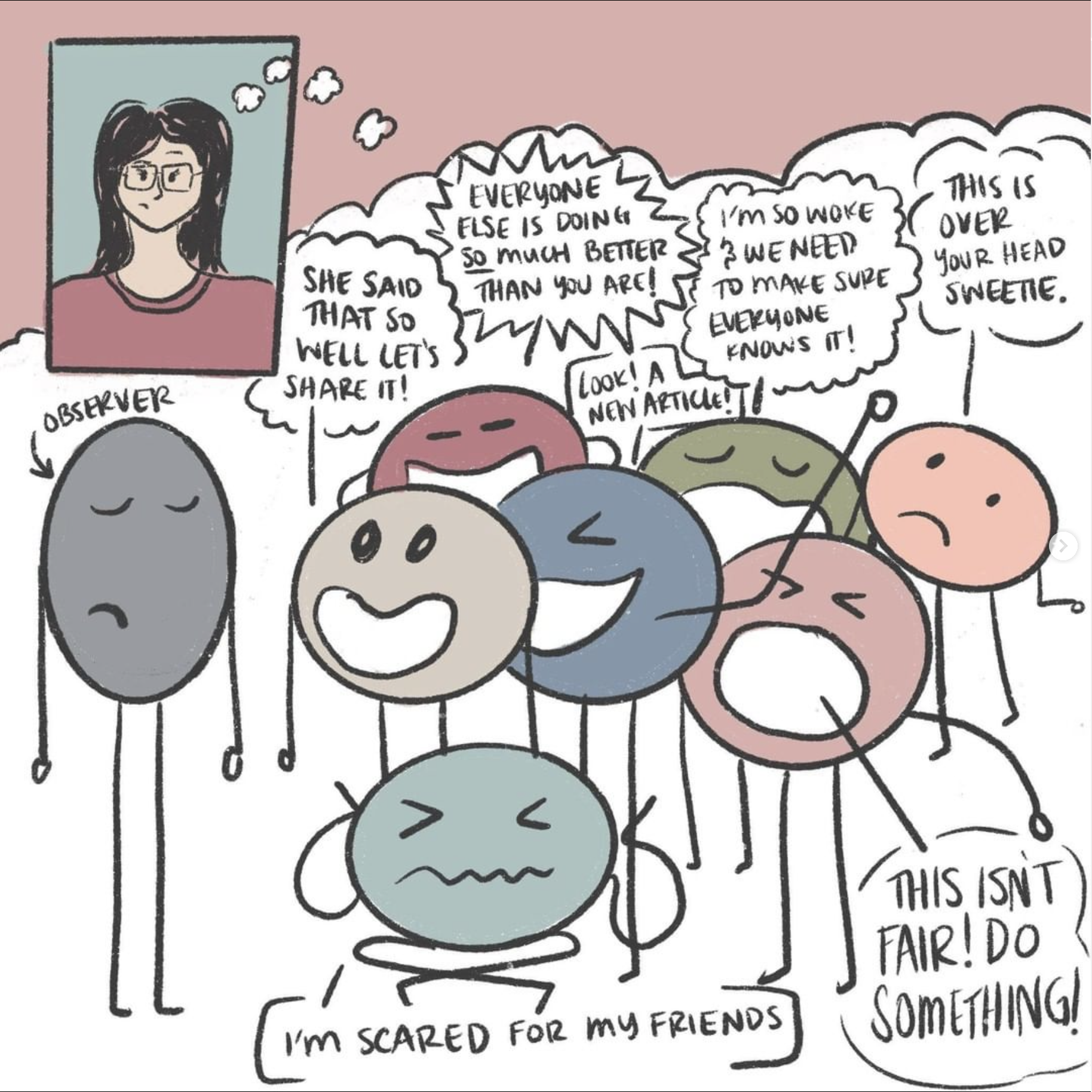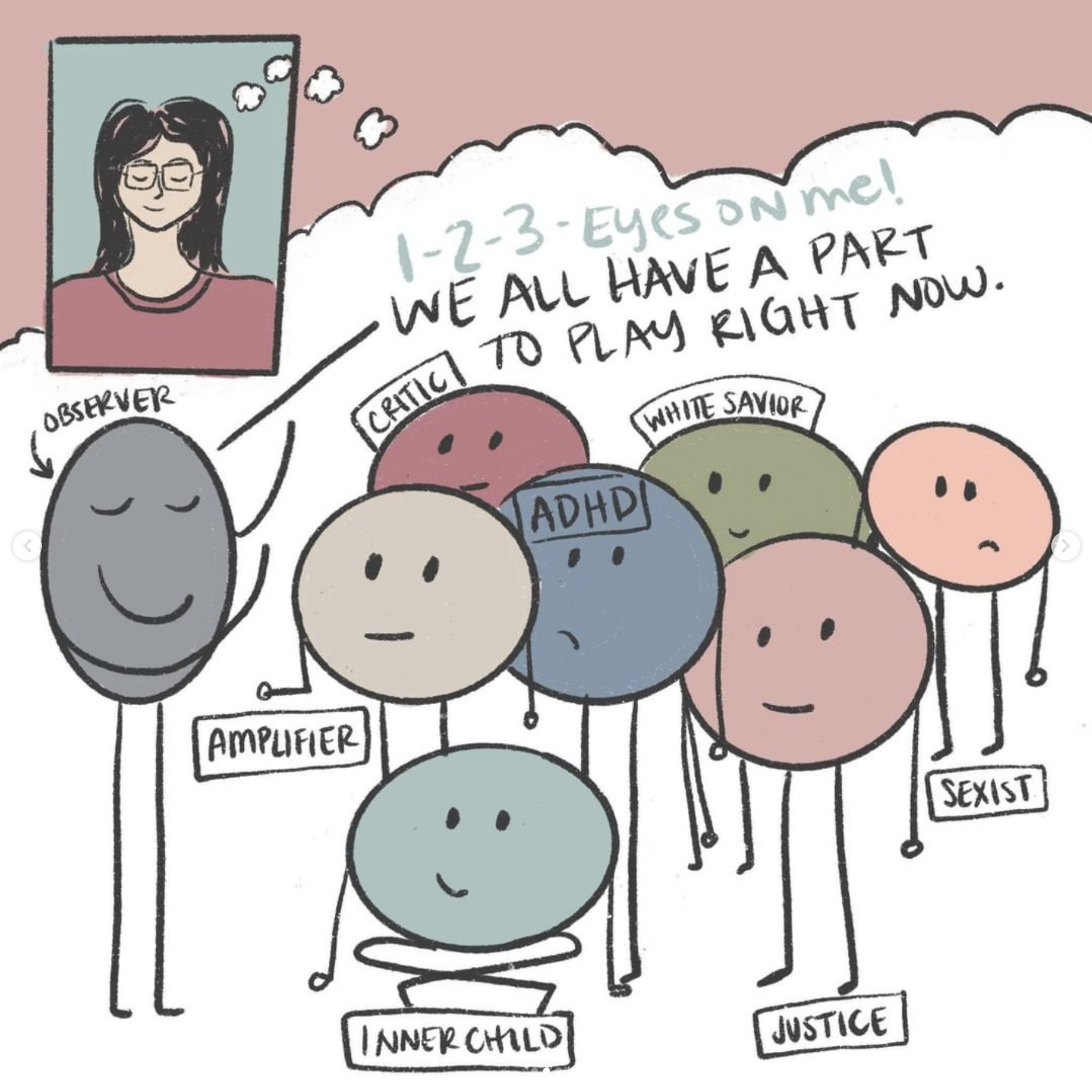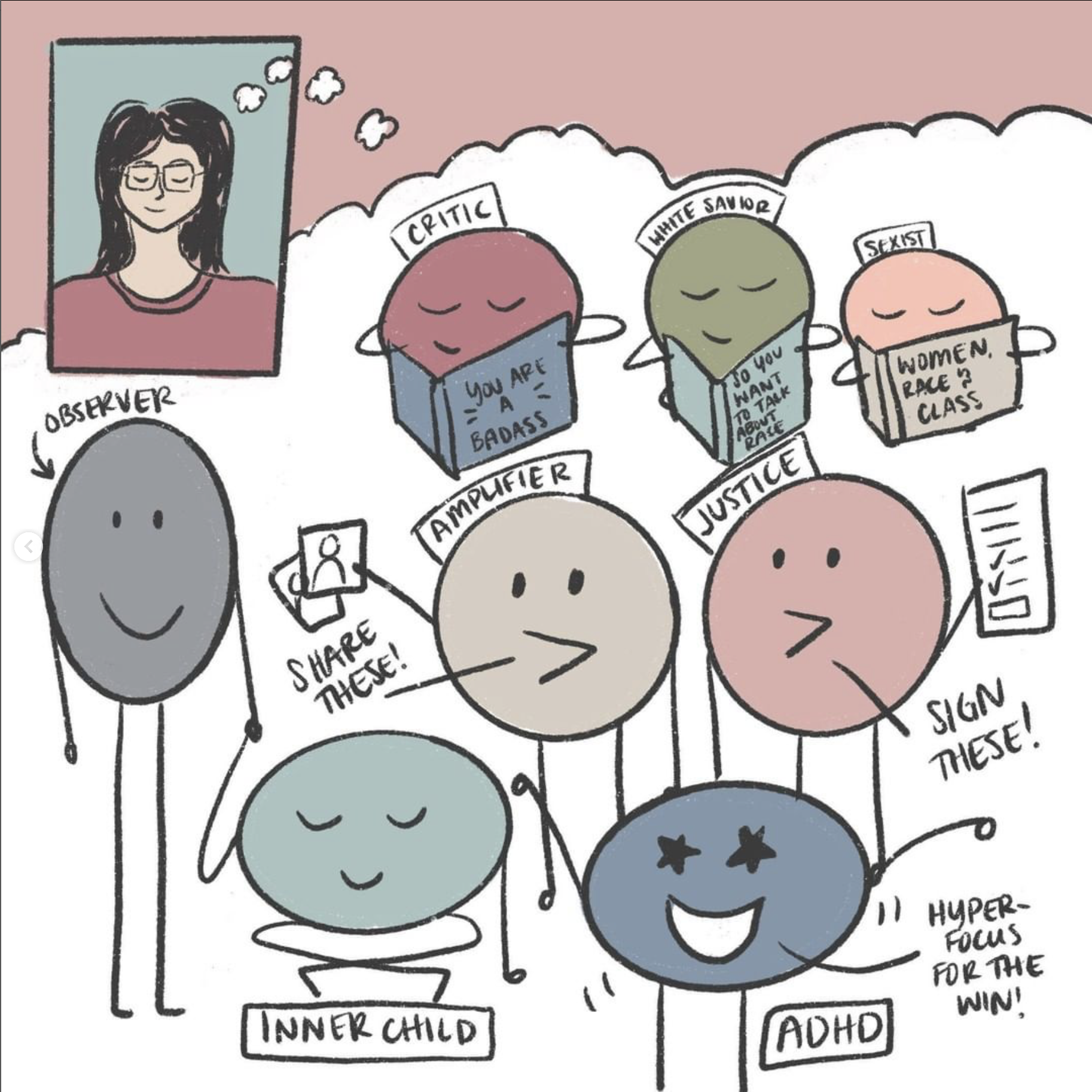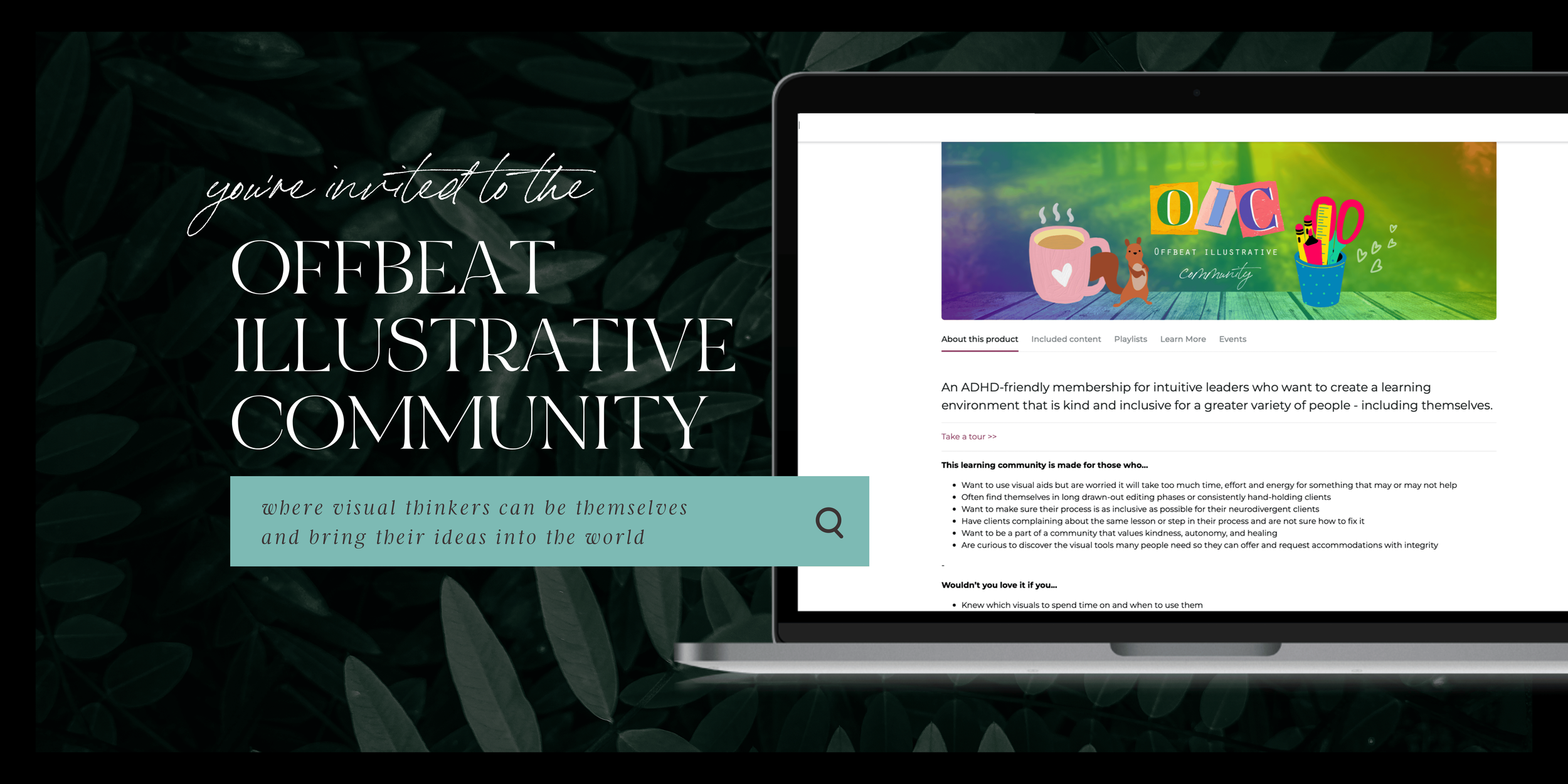How to Love Our Scattered Brains
This will take around 14 minutes to read. You can also listen to it instead:
Quick Summary: Creatively innovative brains that are always moving and brainstorming can often feel scattered. Along the way we pick up lies about ourselves that we are too much, too scattered and not responsible enough. In this article, I share 6 ways to love on your brain and a visual support tool I created that I invite you to try out.
hello self-proclaimed scatterbrains
If you are a creative problem solver chances are you’ve also had many moments in your life where you felt like you didn’t fit in. Maybe things that feel like they should make sense, just don’t. Overwhelm can swoop in like an eagle and boredom feels like death. But man, when you get going, you are really soaring.
I’ve often had thoughts like, “Why can’t I follow the rules?” “Why can’t I stick to a system or do anything right?” “Why am I working so hard to do things and everyone else seems to be just doing it?” Been there?
It’s easy to hate on our brains, but I believe the world needs our magic and that can only happen when we have a healthy view of our brains and how they work. Our brains work the way they do for a reason. So let’s explore how we can care for, love on and understand our way of processing and thinking better.
Brokenness and Visual Aids
I’d be missing something if I didn’t first touch on the stigma around thinking differently. If we don’t do things in a way that works well in a cubicle, corporate job then we are different and broken. It starts when we are kids who are not easily manipulated and controlled. Then at school we don’t follow the curriculum easily enough or ask questions that make the teacher feel less than (if they haven’t done the work). We are often told to try harder, change, not worry so much, sit still, get out of the way, etc.
The system knows we have excellent brains for questioning why things happen, for dismantling things and rebuilding new realities that others cannot imagine - they just don’t want us coming in and changing things. People who want things to stay the same, label our abilities as “messing it up” “chaotic” “idealistic” and then watch in glee as we take up less and less space and try to stay out of the way.
Hell no!
Illustrative is here to help you take up space. Because we know that really, loving on our brains is an act of resistance. So let’s fucking do it!
Having a brain that processes visually and needs visual aids doesn’t make you broken.
In fact the mere idea that any of us are broken in the first place would only work if we had to be everything to everyone as one person. If we didn’t have other people who completed us. If we didn’t belong to community.
Guess what!?!
Humans are social creatures. We are pieces of the puzzle not the whole dang puzzle. What we excel in is an area that someone else struggles with. Where we are challenges others are geniuses. This is the point of our humanness.
If you need to rely on a tool or you need something extra that’s okay. Everyone does in different ways and knowing what support you need is powerful because you allow yourself to show up for others where you shine and you allow others to show up for you where you falter. This also is an act of resistance to being boxed in and forced to follow a life we didn’t choose.
Hurrah! 2 resistances in one article. Let’s go!
7 ways to love on your brain:
Note: Now stay with me on this and read all the way through. A lot of these seems like the conventional advice but I share how I do them differently.
Drink water - water is essential. My favorite way to visually stay on top of my water, which I learned from my sister, is to use a water bottle with the times of the day written out on it so you can see how much you should drink by a certain time to keep water consistently flowing through your body. If it’s a 24 oz water bottle you’d draw a link every 6 ounces with the next hour of the day. When you finish (around lunchtime) it you can refill and do it one more time. That gives you around 48 oz of water a day = 6 x 8oz cups in 12 hours. My therapist also reminds me that you don’t have to enjoy drinking the water, just down it and move on - your future self and brain will thank you.
Sleep - For active and visual minds sleep can be tough. I know for me I have ideas pop into my head and I used to judge myself for the visuals that would play through my mind as I fell asleep making it even harder to relax into slumber. My visual tip: let your brain think about what it wants to think about and just enjoy it. I believe the movies our brains play before bed are there for our entertainment to help us sleep. If you notice that the visuals are less weird or silly and more horrifying - start to chart what you watch and read before bed to see if that is contributing or practice mindfulness practices before bed. There’s no “right” way to fall asleep so play around and see what works, for you, because you matter.
Move your body - Our bodies need to move A LOT! I’ve noticed that they need to move even more than what’s recommended. If your body is hyperactive or always on the move, that’s a great cue that it’s important to give your body times to move so they can be still when needed. My exercise visual aid: Make it pretty. Either choose clothes you feel cute in or with a nice pattern or go to/create an environment that feels luxurious - can be nature, a gym, or a room for moving around in. I also like to use an app that lays out the workout for me in a clear way (Tone It Up).
Find out how you process information - If you know how you learn and how you think then you can save yourself time looking for the right system and just do things that way you need to. A great way to learn more about yourself and how you work is by taking personality quizzes or reports (like human design, enneagram, etc) Think about when you were a kid and how you liked to go about doing your homework or projects you cared about. I personally loved talking it out to friends and family or making a visual sticky note wall of what I needed to learn. Videos work great for me too if I can increase their speed. You can also practice different suggestions for a week and see how each one feels by journaling after.
Have fun! - Gamify everything. We have to get the dopamine somehow! One really fun tool I love for this is the idea of a Dopa-menu from the vlog “How To ADHD.” Sometimes having fun can mean looking at beautiful things. Use tools that make us happy. Being silly. Laughing at life. Finding the missing pieces like a detective. Learning through picture books/guides.
Keep it challenging - If you need the mental stimulation of solving problems that include puzzles and games into your daily life. Schedule time to learn new things. Try new skills often. Make room for failure. Use sticker charts or dance party rewards. Do things that keep life a little challenging so you can stay focused.
Practice mindfulness - Mindfulness is super effective for our brains. Learning how to let thoughts float by and how to be present is a skill that we need to practice. One of my favorite mindfulness skills that I learned in therapy is called “parts psychology.” That’s basically naming all of the different characters who pop up in your mind to identify where different thoughts are coming from. I do this ALL the time. It’s the perfect analogy for me. Here are some examples:
Getting wild with parts psychology
I started using parts psychology in my everyday life as I unlearned and grew in my own self compassion and self discipline practices. As a mother, I also saw the benefit of teaching this process to my kids. So one day when one of my kids was feeling emotional and didn’t know how to determine what was wrong, I thought of showing them parts psychology through their favorite topic: Zoos. It worked so well that I used it with the whole family and then started using that for myself.
Then I thought, really everyone should have this tool so I refined it and gave it to the O.I.C. family.
Essentially it’s a tool that allows you to name each emotion as a different animal and then brainstorm what that animal needs so you can intentionally balance the ecosystem in there.
You can see for yourself in this sneak peek of what’s in the product.
We’d love for you to join us in the O.I.C. to get all kinds of tools for your unique brain, to help you visually support your sphere of influence and to be in community with people who get it.
So there you have it! 6 ways to love on your brain and an invitation to join us in our quest to be ourselves and support others in their journeys with what we rock at.
Have an amazing day!
Your visual advocate,
Laura
I’d love to hear what you learned from the article! If you have questions or want to share about your work you can leave a comment below or email me at laura@illustrative.us.
AUTHOR | LAURA MATTESON
Laura is a neurodivergent artist, mother, wife, founder of Illustrative with fancy drawing skills and a huge bucket-full of hope and love for humanity.








